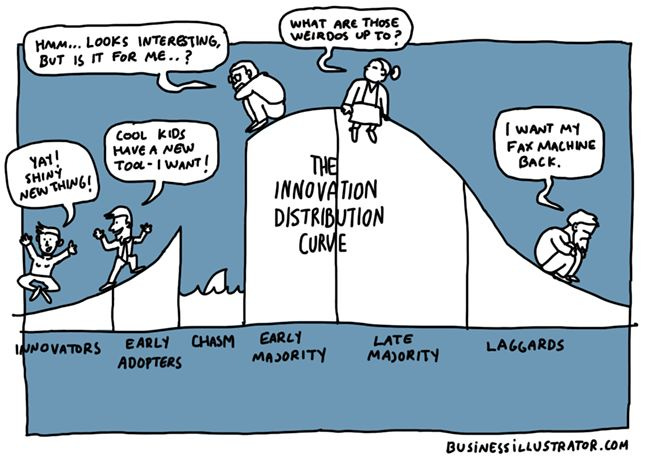How To Lead Transformation That Lasts
The 6 Facets of change efforts that align purpose, process, and culture
Change, even when it’s positive, can be stressful. At a fundamental level, change can trigger a subconscious threat response. When people sense risk to their routines, status, or certainty, their brains register it as a possible danger. This fear response often surfaces in indirect ways: hesitation, second-guessing, pushback, confusion. Left unaddressed, these responses can ripple through teams and stall progress.
So how do you promote meaningful change without stoking fear? You lead with clarity, empathy, and structure. You inspire rather than impose. And you stay focused on both the systems and the people who will carry them forward.
👋 Hey, it’s Jess. Welcome to my weekly newsletter, Thought(ful) Leaders, where I share practical guidance on organizational transformation, leadership development, and interview other thoughtful leaders on the future of work.
☎️ Let’s hop on a call to talk through the big transformations you’re leading. Here’s a link to my calendar to book time.
If you’re not a subscriber yet, catch up on my latest articles from last month:
Subscribe to get access to these posts, and all future posts.
Understand Who the Change Is For
Effective transformation starts with the people it is meant to serve. These may include residents, customers, internal staff, and external partners. The only way to design solutions that stick is to first understand the experience they’re having today.
What are they trying to do?
What happens when they try to do it?
Where are they running into friction?
You can answer these questions by listening and observing. Conduct a listening tour. Interview users and staff. Take notes, capture stories, and get curious about lived experiences and the impacts of the current state.
Do the work yourself. Go on a Gemba walk. Apply for the permit, call the help line, sit in the waiting room. Firsthand experience is often the clearest window into what needs to change.
Pair that with data. Look at call center logs, web traffic, and service completion rates. Gather both the qualitative and quantitative inputs that tell you how your systems are performing today. This is where grounded change begins: by working from real needs, not assumptions.
Inspire Change. Don’t Impose It.
To build momentum, lead with a vision that draws people in rather than mandates that push them forward. Change is far more sustainable when it feels meaningful and shared.
Start by clearly articulating the broader purpose. Efficiency alone won’t motivate people. Use tools like the “five whys” to uncover the deeper impact you hope to make. What future are you working toward? Why does it matter?
Then help individuals connect that collective purpose to their personal motivations: what success looks like for them not just professionally, but in terms of their values, quality of life, and long-term goals.
Avoid framing the present as a failure. Suggesting that the current state is broken risks alienating the people who built it. Instead, honor the work that brought you here. Recognize the effort, ideas, and persistence that made this moment possible, and frame the change as the next chapter, not a correction of the past, but a continuation of it.
Ask your team: how do you respond to change? What fears are triggered for you? Acknowledge that resistance often comes from a protective place. If you ignore it, it can derail progress. If you name it, you can move through it together.
Invest in Organizational Health
Culture and performance are closely linked. Teams that manage change well tend to share three traits:
Clear direction, working norms, and shared purpose
Supportive leadership and healthy team dynamics
A culture of peer accountability and continuous improvement
This is about building the conditions for sustained, high-quality work. Without clarity and trust, even the best strategy will collapse under stress.
Share the Architecture of Change
One of the most helpful things a leader can do is paint a picture of where the organization is going and how it will get there.
Start by defining the key pillars and milestones for the year. Avoid overwhelming teams by showing every minute detail of the entire A-to-Z path. Not only should you involve a broader coalition in designing the delivery or execution at that level of detail (they’re the experts), but presenting everything all at once can be completing overwhelming and imposing.
Keep the roadmap high-level. Too much tactical detail at this stage can obscure the vision. Show people what’s possible, not just what’s immediate.
Once you’ve articulated the big picture, clarify your current priorities.
What outcomes are you responsible for delivering?
Where is there a gap between intention and performance?
What work is taking time but not driving progress?
Resources are limited. In times of constraint, prioritization becomes essential. Logic models, Eisenhower matrices, and outcome-based planning tools can help clarify what matters most and where to make tradeoffs.
Strategy is not just about what you do, it’s also about what you choose not to do.
Use the Flywheel Effect
Jim Collins’ research in Good to Great found that breakthrough results often come from consistent, small actions that build over time. He called this the flywheel effect.
The same principle applies to change. Don’t try to move the whole wheel at once. Focus on the small, steady actions that build momentum.
Look for the one percent improvement
Celebrate early progress
Make results visible
Reinforce what’s working
Incremental delivery is what keeps the wheel turning. When people see consistent, tangible improvements paired with positive feedback, they begin to believe that larger transformation is possible. The felt experience of progress matters. If change feels chaotic or burdensome, it will be resisted. If it feels purposeful and affirming, it will gain traction.
Clear, consistent communication is critical.
Share updates often. Communicate what’s improving, repeat success stories, and tie them back to the broader vision. This builds understanding and reinforces alignment.
Involve stakeholders in planning and implementation, and work in the open as much as possible. The more people can see the why, the how, and the progress being made, the more likely they are to support and sustain the change.
Avoid slipping into constant judgment or impatience. If the message becomes, “We’re only at A and we should be at Z,” people lose motivation. The pace of progress matters less than the feeling of momentum.
Share wins, even small ones. Momentum builds belief.
Work Iteratively and Learn Along the Way
Many transformation efforts fail because they’re too rigid. When the plan is fixed, there’s no room for learning or adjustment.
Instead, work in cycles.
Test early with existing or off-the-shelf tools
Share simple prototypes or pilots
Gather feedback
Adjust based on what you learn
This reduces risk, increases trust, and allows the plan to evolve as conditions change. It also demonstrates responsiveness, which builds credibility.
People are often resistant to new processes because they feel like extra work. To reduce friction, avoid layering new systems on top of old ones. Focus instead on simplifying and improving what already exists. Even better, give people the tools and permission to assess their own processes for inefficiencies. Invite them to identify what is draining time and energy, and help them align those changes with the broader goals of the transformation. Before you introduce a new change effort, ask yourself:
Am I creating more work for people?
Does this change effort improve or simplify existing workflows or just add complexity?
What is the size of the learning curve associated with this change?
Meet people where they are: in the systems, tools, and routines they already use. This makes adoption easier and keeps the focus on progress, not disruption.
Change becomes sustainable when the daily experience of work is more focused, effective, and aligned with the organization’s purpose.
Lean Into The Adoption Curve
Finally, understand that not everyone comes on board at the same time. Most change follows an adoption curve, first coined as the diffusion of innovation theory (Rogers, 1962.), and simplified here for the purposes of this article:
Early adopters are energized by what’s new and often have credibility across the organization
Late adopters are slower to buy in but will move once early adopters show success
Laggards are the last to shift, usually for good reasons tied to safety, history, or complexity
This is normal. Don’t try to force uniform adoption. Instead, create the conditions that make later adoption easier.
Leaders often fall into the trap of introducing multiple change initiatives that pick up momentum with early adopters, but stop short on listening, iterating, learning, and adapting to pick up the late adopters and laggards. These creates a culture of executives chasing shiny objects and a pool of late adopters and laggards only growing larger and more suspicious of the value of any future changes.
Here’s what it looks like when it goes well. One example comes from the open data initiative I supported at California Health and Human Services. Public health teams, working with mostly non-sensitive data, were ready to publish early. Child services teams, dealing with personally identifiable information and a history of data breaches, were understandably hesitant.
Rather than push them to go first, the project team allowed 11 other departments to lead the way. Over time, the child services team adopted the model, using it in a way that felt safe and useful.
Here’s how the Agency Secretary reflected on this huge organizational transformation in his own words:
“It is important to recognize that there always will be resistance, this is human nature. It is therefore important to illustrate the value of this work and show progress so that this is not just an empty idea, but a series of concrete outcomes that reinforce change.
You need to create an environment that recognizes the inherent risk of the status quo and encourages taking calculated risks to innovate and improve.
You must recognize that you will fail, but fail small and fail fast. When you fail, you need to take the time to learn from those failures.
Innovation is not just about big ideas that result in large transformations, but perhaps more importantly, it is about small, incremental solutions that make us more efficient and effective.”
Michael Wilkening
Former Secretary, California Health and Human Services
This approach respects different starting points and creates a foundation for sustained, system-wide change.
Need A Guide By Your Side?
Change is hard. It requires planning, patience, and real commitment. But when you center the people you’re serving, invest in organizational health, and move forward with steady focus, it’s possible to create transformation that lasts.
If your team is navigating change and you want support in clarifying direction, aligning your organization, or improving execution, I can help through:
Executive coaching for leaders
Team workshops to build clarity, trust, and performance
Strategic consulting to support effective transformation
📩 Book time on my calendar to start a conversation, and subscribe to Thought(ful) Leaders for more insight and tools.








